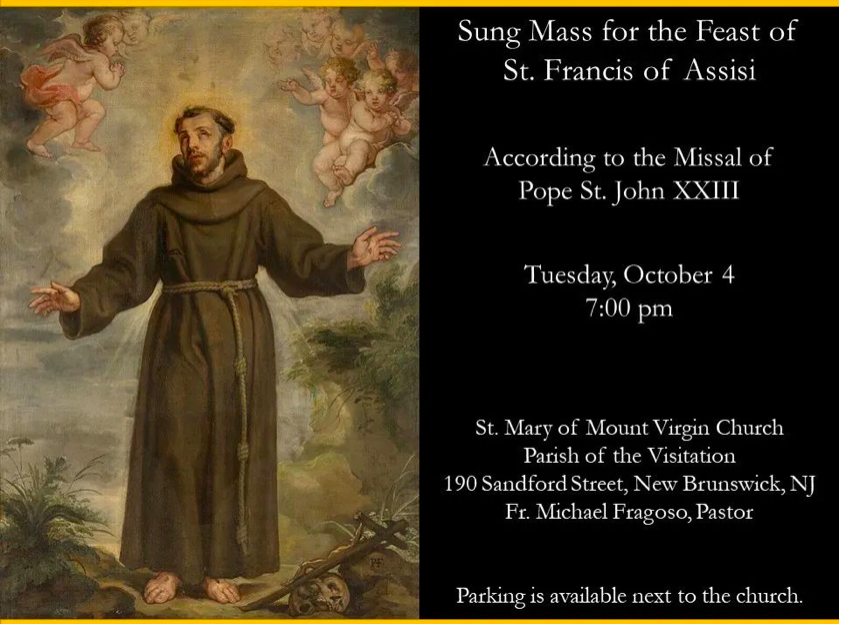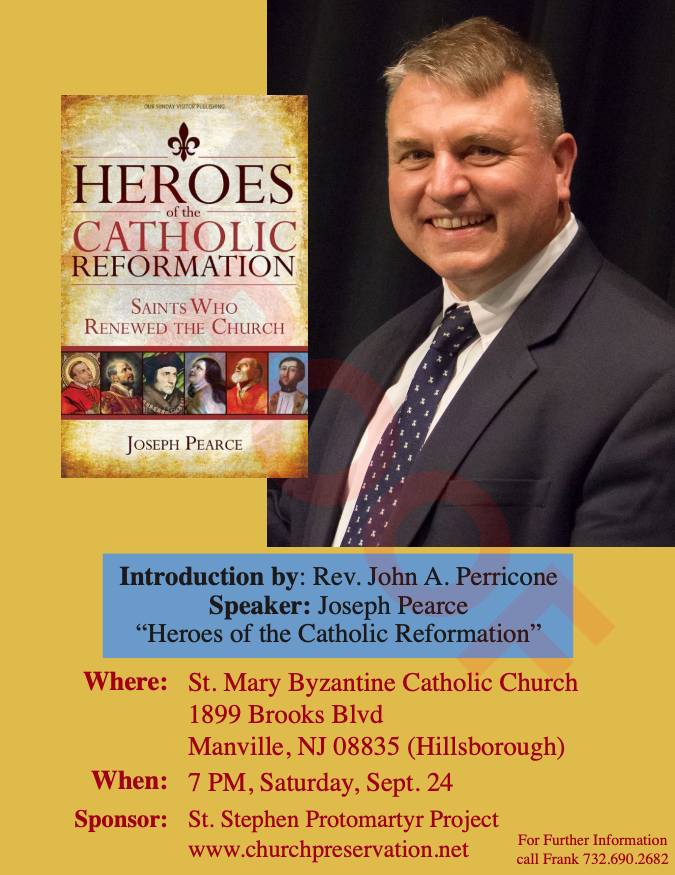
19
Sep
Fr. Donald Kloster has scheduled the following Masses at St. Marguerite Bourgeoys Church in Brookfield, CT.
Wednesday September 21, 7 am, Feast of St. Matthew, Low Mass
Thursday September 29, 6 pm, Michaelmas, Solemn High followed by a Convivium with Fr. Kloster’s famous chili and potluck in the St. Marguerite Parish Hall.
19
Sep
16
Sep
15
Sep
State and Church, “libertarian” and “truth-oriented” government – these topics once again stir up controversy. In the United States, by 1960, Catholics were fantasizing that conflicts over such issues were, for them, a thing of the past. Since then, the government of the United States at Federal, state, and local levels has increasingly adopted policies overtly hostile to Christianity; thus, the debate – in the context of actual political conflicts – reemerged. On the practical level, we might cite the development and successes of the vast pro-life movement; in the realm of political theory there is the esoteric and specifically Catholic “integralist” discussion.
I think it might be of interest to turn back to Thomas Molnar (1921 – 2010) to shed light on the subject. He was a thinker who frequently dealt with the roles of both state and Church. One of his few (the only?) books to have been reprinted in English since his death is The Church and the State: The Catholic Tradition as an integral Element of Western Political Thought (Cluny, 2018) – originally published under the more accurate title of Politics and the State: a Catholic View (Franciscan Herald Press, Chicago 1980).
I would not suggest this work as an introduction to Molnar’s thought. Much of it is the author’s critical confrontation with schools of thought from which Molnar seeks to distinguish the Catholic tradition – like the main strands of “conservative” political science in his day (Federalist, Straussian and “Voegelinian”) or an array of post-Thomistic political thinkers of the past, from Marsilius of Padua to Hegel. One does not find in The Church and the State the originality of Molnar’s pioneering works of the 1960’s such as The Decline of the Intellectual (1961) or The Counter-Revolution (1969). Nor do we encounter the passionate intensity of his increasingly savage dissection of the liberal ”civil society” now dominant in the US and Western Europe, as set out in a whole series of books such as Le Modèle Défiguré: L’Amérique de Tocqueville à Carter (1978) or The Emerging Atlantic Culture (1994). And a much more detailed discussion of the post-Conciliar Church can be found in The Church: Pilgrim of Centuries (1990). In contrast, The Church and the State has a more disengaged, abstract character. Many of Molnar’s arguments and opinions seem to me to be only sketched out or to presuppose the reader’s familiarity with his other works. Perhaps Molnar’s heart wasn’t in this book. Whereas the other works previously mentioned focus on very concrete political, cultural, or historical situations, in 1980 the question of the relation of the Catholic Church – as it existed after the Council – to contemporary American state and society was of necessity highly theoretical.
Nevertheless, the Church and the State, like any book of Molnar’s, offers a wealth of insights. The author, in marked contrast to our current integralists, avoids proposing “solutions” or a specific course of action. He is aware of the limited applicability of precedents from the ancient or medieval world to the unprecedented secular age of modernity. Yet he insists on the superiority of the Catholic philosophical tradition in analyzing the role of the state. Not unexpectedly, Thomas Molnar proposes the synthesis of ancient and Christian thought achieved by Thomas Aquinas as the standard for a Catholic view of the state.
This book is in fact largely a defense of politics and the state (as the original title implies). Both are natural to man. Indeed, the state derives its authority either directly or indirectly, through the people, from God. Yet, after Christianity, the state can no longer demand from the individual citizen total loyalty such as did the Greek polis. Similarly, although monarchy remains the preferred form of government – certainly in Aquinas’s judgment – in Christendom the state also incorporated democratic features.
The Church has an objective that is supernatural and primarily directed toon the salvation of each unique, individual person. Now the state is (or should be) oriented towards the temporal common good. It needs, however, the presence and cooperation of the Church to achieve these ends. But the Church as an incarnate institution also needs the state. Molnar views the two realms as coexisting in harmony. One is not subordinated to the other – but for the integrity of both a link must be maintained. Otherwise, despite its ever-growing size, the modern state drifts aimlessly, in subjection to the forces of contemporary civil society (the non-state, non-Church institutions). What form this connection should take and how is to be reestablished Molnar does not tell us. The Church’s “temporal power” or the overtly political linkage of “throne and Altar” from the age of Christendom have little or no relevance today.
”In contemporary pluralist societies, the power of the Church can only moral and spiritual, but it must so emphasize the moral and spiritual domain that it should be evident that society’s integrity and survival depend on it. The result would be a modicum of mundane power as well…..” (p.141)
Moreover, Molnar asks how the Church can impart moral direction to the state, when it too is in subjection to the same secular ideologies that dominate the state and society? At the level of the local national hierarchies, complete doctrinal confusion reigns – both in Molnar’s day and today. Molnar is somewhat coy on the role of the papacy. But it is interesting – given his later views on the subject – that he does seem mildly optimistic in regard to the initial actions of Pope John Paul II. It’s indicative, however, of Molnar’s overall judgment on the Catholic Church in 1980 that the contemporary Christian thinker he quotes most often in this book is not a pope, bishop or religious but Aleksander Solzhenitsyn (not Roman Catholic at all).
For according to Molnar, it is above all through the action of the lay faithful that Christian influence on the state will be exercised. Moreover, Molnar sees a leading role for the laity in saving the Church as well. Indeed, as in many other issues, he was prophetic! In the very year this book was published the Solidarity movement took off in Poland, And hasn’t the United States Catholic laity – collaborating with many others – achieved what was called impossible, the reversal of Roe v. Wade? Counter-cultural Catholic political movements are active at this moment in Hungary, Poland and even Italy. I don’t need to tell the readers of this blog about the role of the laity in the traditionalist movement. With the exception of Solidarity, all these movements faced a hierarchy and Vatican that were ambiguous or even hostile to their aspirations.
Perhaps The Church and the State is too inconclusive and tentative in its conclusions – this book is no “manual” for action. But Molnar was aware of the complexities of politics and life, and of the chaotic situation both of the Catholic Church and of Western state and society circa 1980. 42 years have not improved matters. On the contrary – Molnar’s narrative of the dire moral challenges facing the Church from a state that has been subordinated to contempoary secular society reads like it had been written yesterday! And perhaps just clarifying the issues and freeing the discussion from the clutches of hostile ideologies is itself no mean achievement.
10
Sep
See below for the description (in French) of the September 24 conference:
What is the future of the Traditional Mass?
It looks like a wonderful program with many leaders of the Traditionalist movement, that seems to frankly address the current issues. You should know, however, that the conference had to be moved to a secular venue after the new archbishop of Paris refused the use of facilities of the Ste-Odile parish:
Quel avenir pour la messe traditionnelle ? (Le Salon Beige 8/11/2022)
Also, I do not see any reference to a Mass being celebrated in connection with this conference.
9
Sep
Cavalier Tunes: Give a Rouse
Posted by Stuart Chessmanby Robert Browning
King Charles, and who’ll do him right now?
King Charles, and who’s ripe for fight now?
Give a rouse: here’s, in Hell’s despite now,
King Charles!
Who gave me the goods that went since?
Who raised me the house that sank once?
Who helped me to gold I spent since?
Who found me in wine you drank once?
(Chorus)
King Charles, and who’ll do him right now?
King Charles, and who’s ripe for fight now?
Give a rouse: here’s, in Hell’s despite now,
King Charles!
To whom used my boy George quaff else,
By the old fool’s side that begot him?
For whom did he cheer and laugh else,
While Noll’s damned troopers shot him?
(Chorus)
King Charles, and who’ll do him right now?
King Charles, and who’s ripe for fight now?
Give a rouse: here’s, in Hell’s despite now,
King Charles!
8
Sep
In honor of the Nativity of Our Lady, the students, faculty and parents attended a Solemn Mass today to mark the opening of the school year. 13 students expertly served as acolytes. Following the Mass the teachers, administrators and trustees recited a profession of Faith and oath of fidelity to the Church. New students were invested in the Brown Scapular. The Society of St. Hugh of Cluny sponsored this Mass.


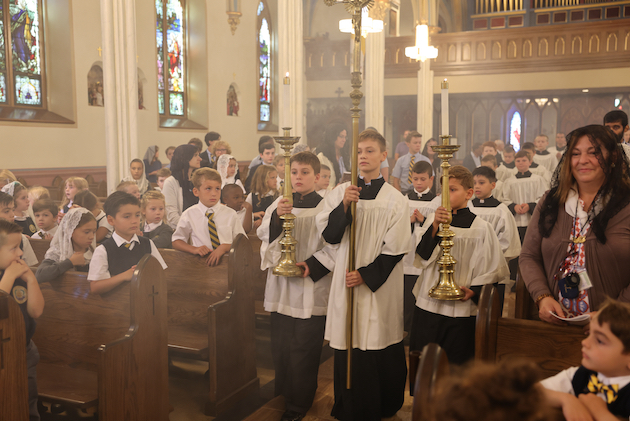
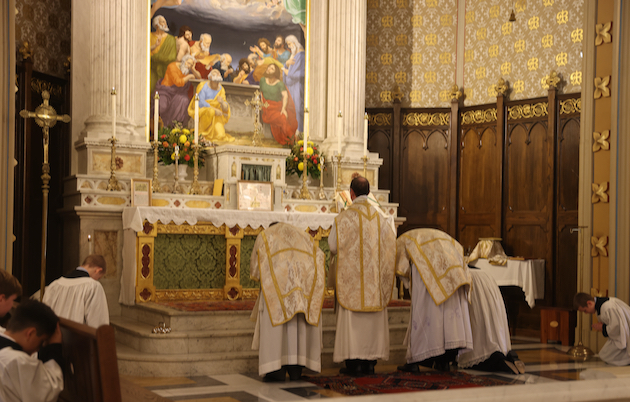


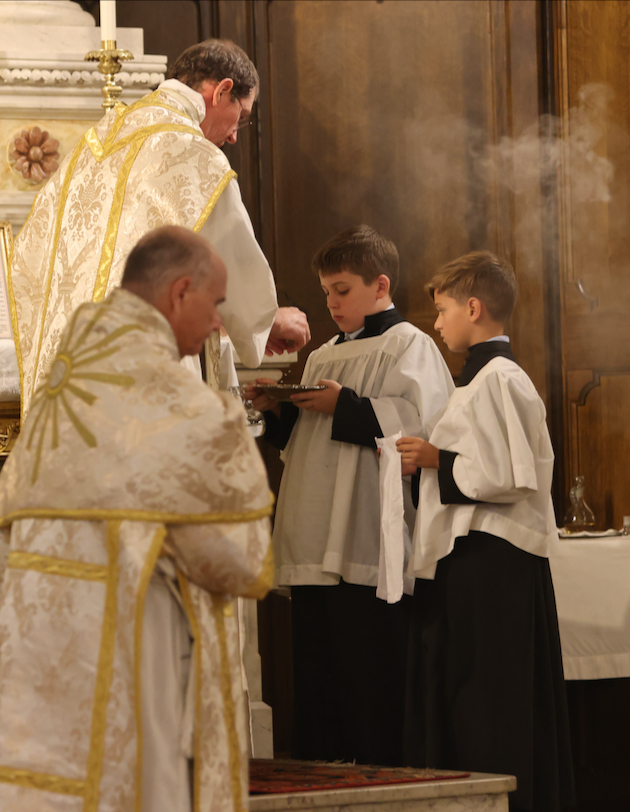

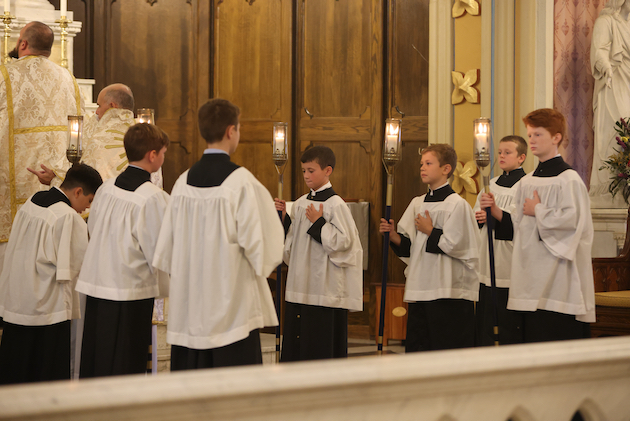
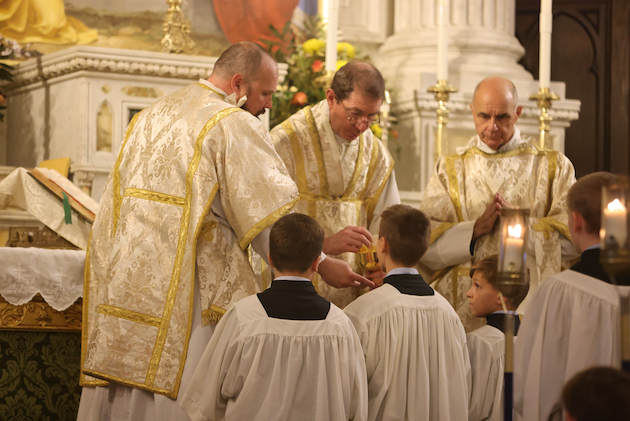

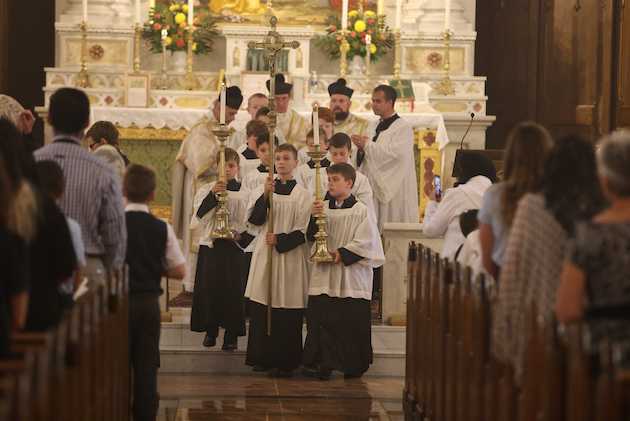

7
Sep
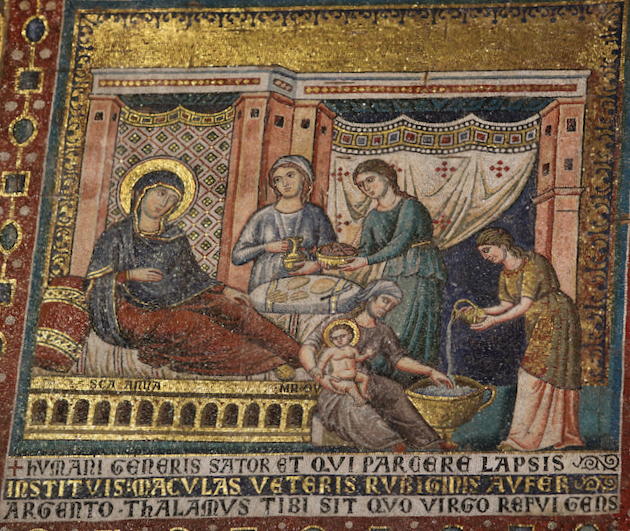
The public is invited to attend.
St. Mary’s Church will also have a low Mass at 8 am.
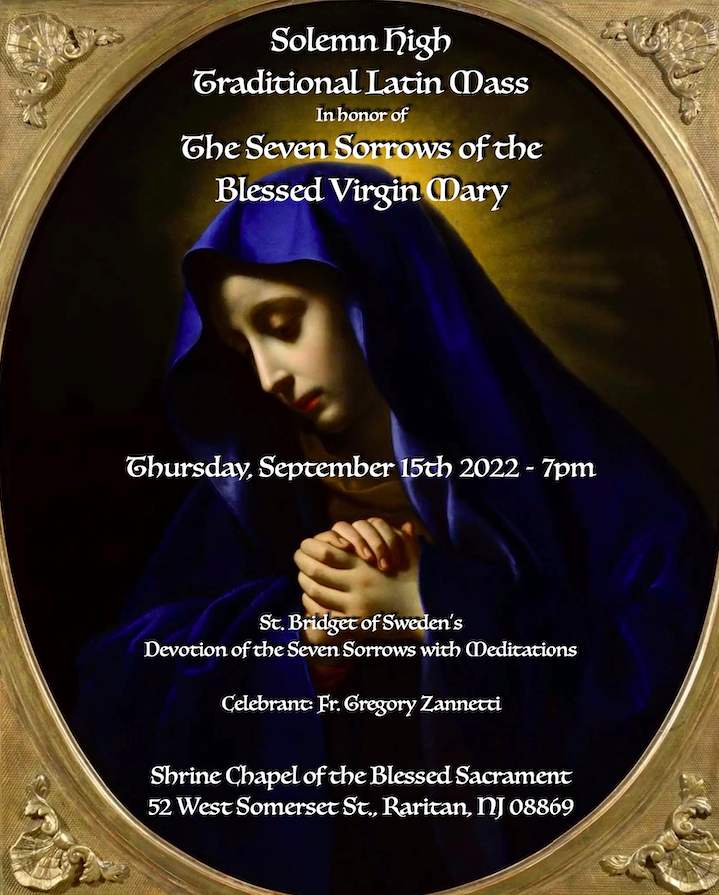
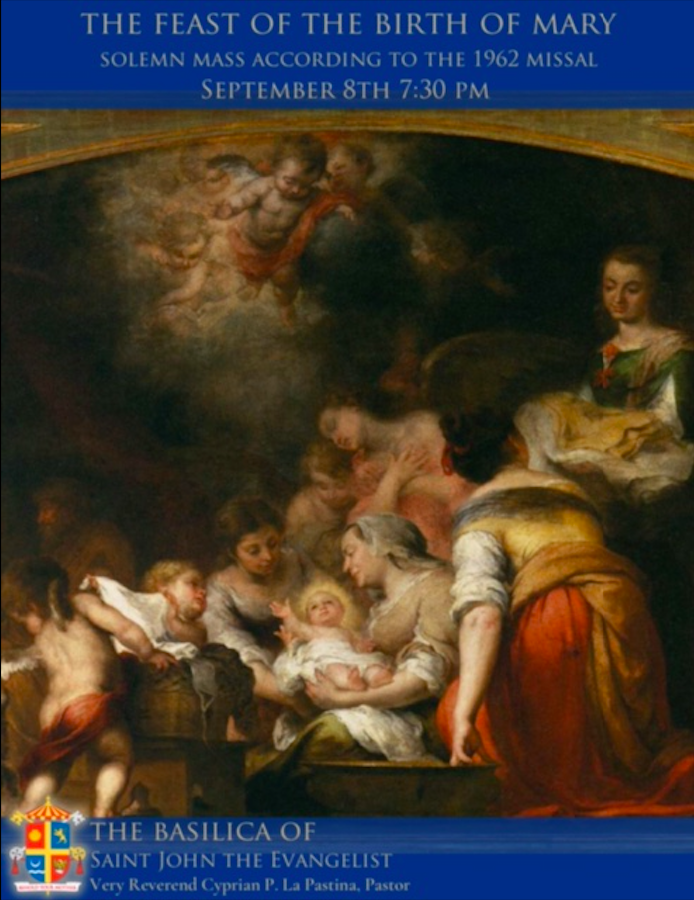

Contact us
Register
- Registration is easy: send an e-mail to contact@sthughofcluny.org.
In addition to your e-mail address, you
may include your mailing addresss
and telephone number. We will add you
to the Society's contact list.
Search
Categories
- 2011 Conference on Summorum Pontifcum (5)
- Book Reviews (95)
- Catholic Traditionalism in the United States (24)
- Chartres pIlgrimage (17)
- Essays (176)
- Events (670)
- Film Review (7)
- Making all Things New (44)
- Martin Mosebach (34)
- Masses (1,343)
- Mr. Screwtape (46)
- Obituaries (15)
- On the Trail of the Holy Roman Empire (22)
- Photos (347)
- Pilgrimage Summorum Pontificum 2021 (7)
- Pilgrimage Summorum Pontificum 2022 (6)
- Pilgrimage Summorum Pontificum 2023 (4)
- Sermons (79)
- St. Mary's Holy Week 2019 (10)
- St. Mary's Holy Week 2022 (7)
- St. Mary's Holy Week 2023 (7)
- St. Mary's Holy Week 2024 (6)
- Summorum Pontificum Pilgrimage 2024 (2)
- Summorum Pontificum Pilgrimage 2025 (7)
- The Churches of New York (198)
- Traditionis Custodes (49)
- Uncategorized (1,377)
- Website Highlights (15)
Churches of New York
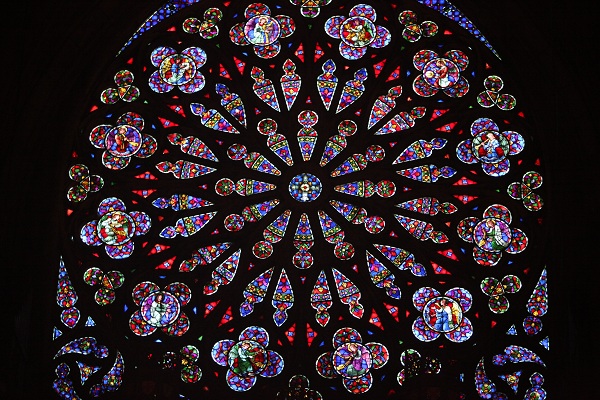
Holy Roman Empire

Website Highlights
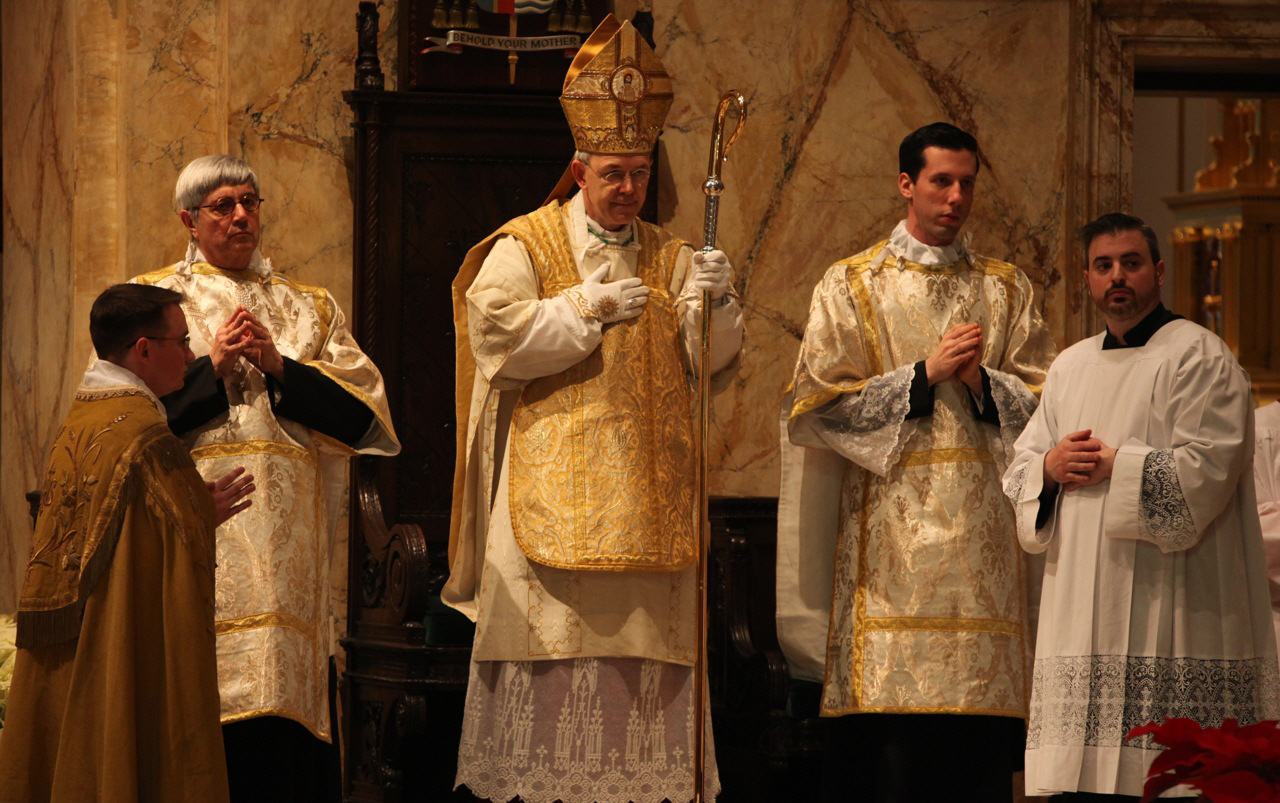
Archives

[powr-hit-counter label="2775648"]
